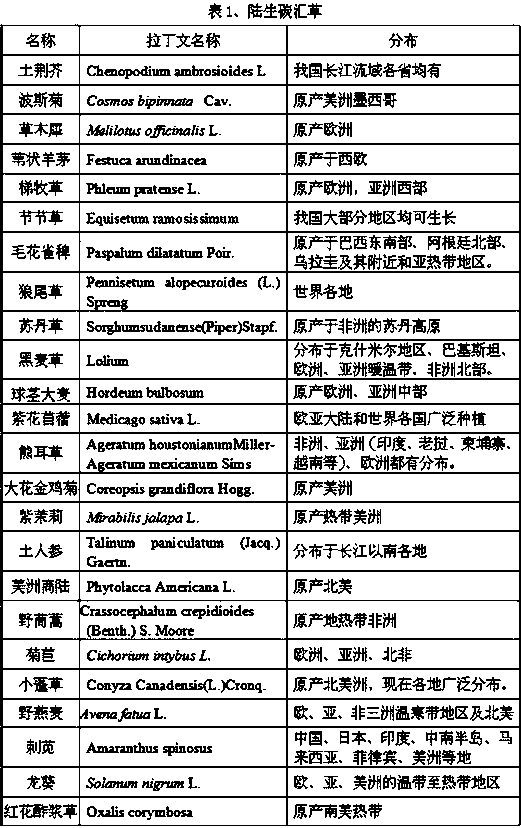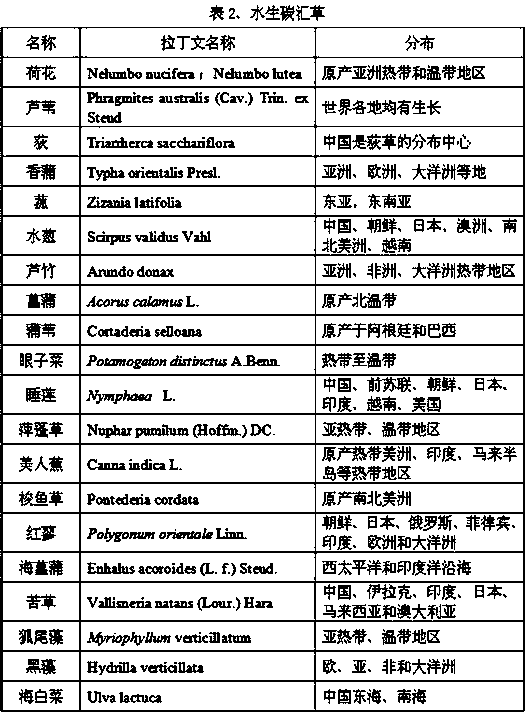Method for scoping carbon sequestration
A carbon sequestration grass and category technology, applied in the field of carbon sequestration grass category definition, to achieve the effects of regulating the greenhouse effect, eliminating smog, and increasing soil carbon sequestration capacity
- Summary
- Abstract
- Description
- Claims
- Application Information
AI Technical Summary
Problems solved by technology
Method used
Image
Examples
Embodiment Construction
[0039] A method for defining the scope of carbon sequestration, comprising the following steps:
[0040](1) Select herbaceous plants that have the characteristics of rapid growth and repeated germination, and can be mowed more than twice a year as carbon sink grasses to define the scope;
[0041] (2) Determine the various indicators of carbon sink grass:
[0042] When the terrestrial herbaceous plants growing in the terrestrial area, the biomass of the aboveground part is greater than 30% of the average biomass of the aboveground part of the terrestrial herbaceous plants in the region, and the organic carbon content of the aboveground part is greater than the organic carbon content of the aboveground part of the terrestrial herbaceous plants in the region 5% of the average value, it is determined that the herb plant is a carbon sink grass;
[0043] When the terrestrial herbaceous plants growing in the land area, the biomass of the underground part is greater than 20% of the a...
PUM
 Login to View More
Login to View More Abstract
Description
Claims
Application Information
 Login to View More
Login to View More - R&D
- Intellectual Property
- Life Sciences
- Materials
- Tech Scout
- Unparalleled Data Quality
- Higher Quality Content
- 60% Fewer Hallucinations
Browse by: Latest US Patents, China's latest patents, Technical Efficacy Thesaurus, Application Domain, Technology Topic, Popular Technical Reports.
© 2025 PatSnap. All rights reserved.Legal|Privacy policy|Modern Slavery Act Transparency Statement|Sitemap|About US| Contact US: help@patsnap.com



